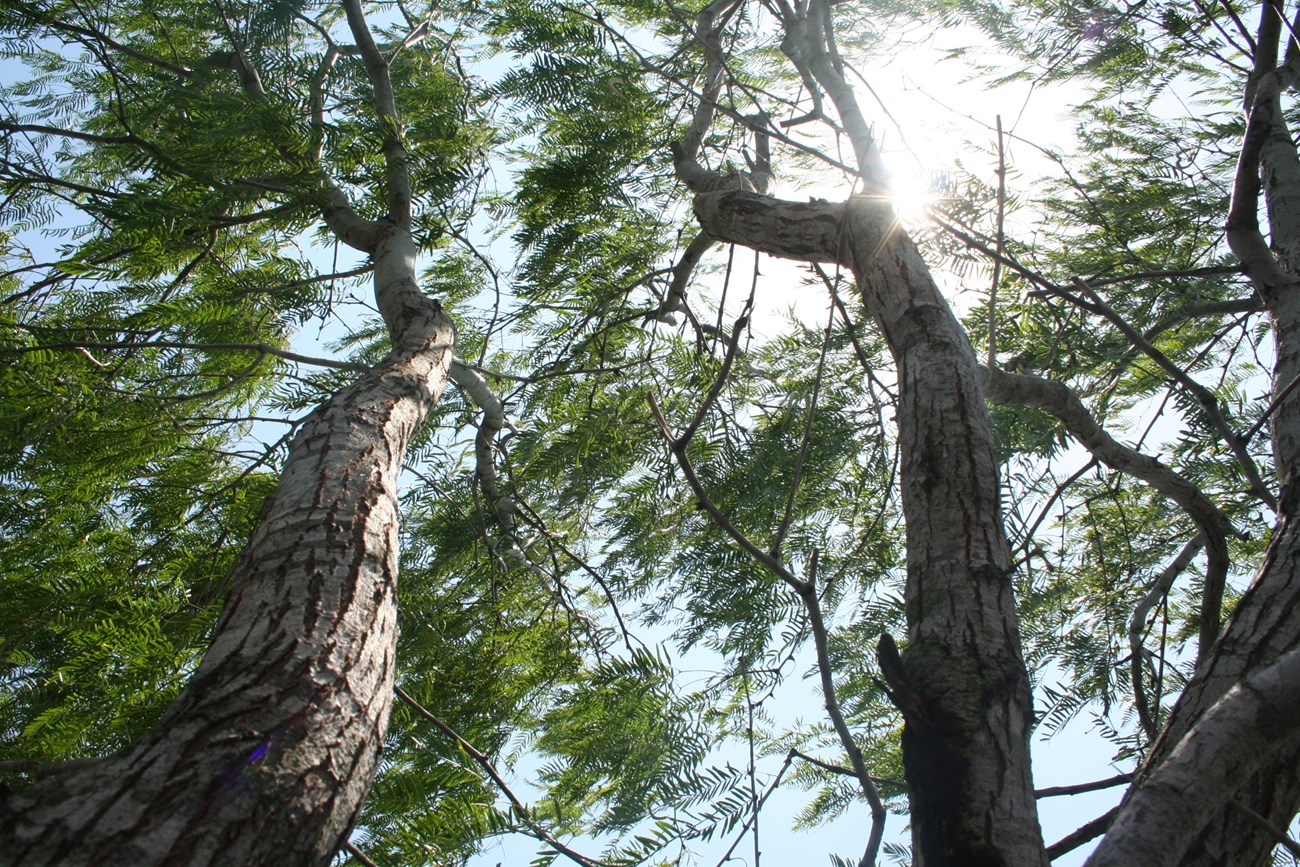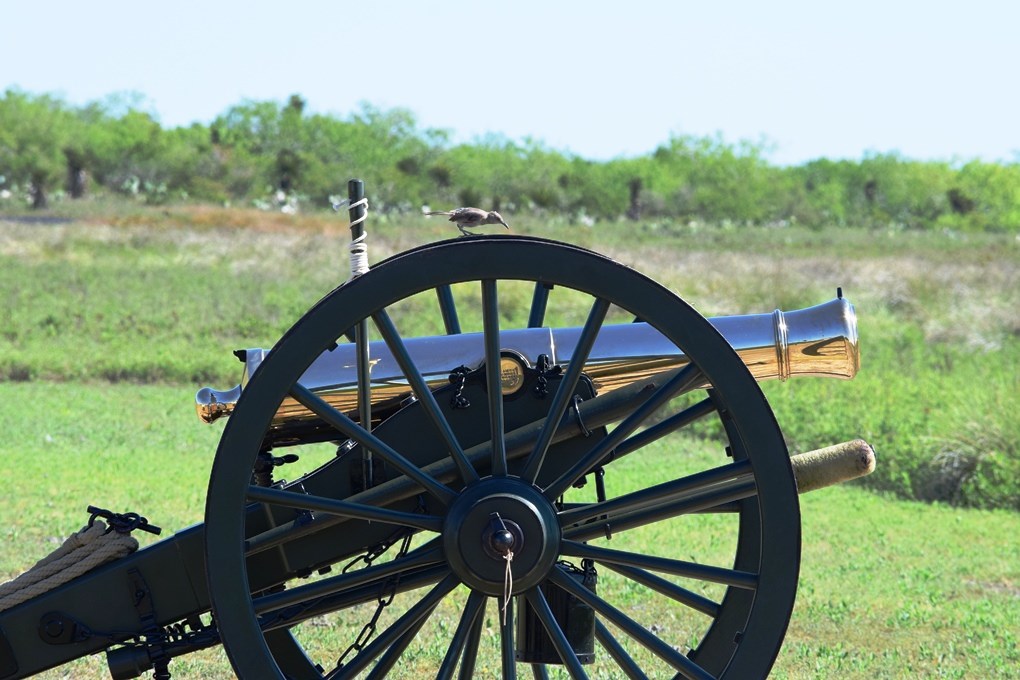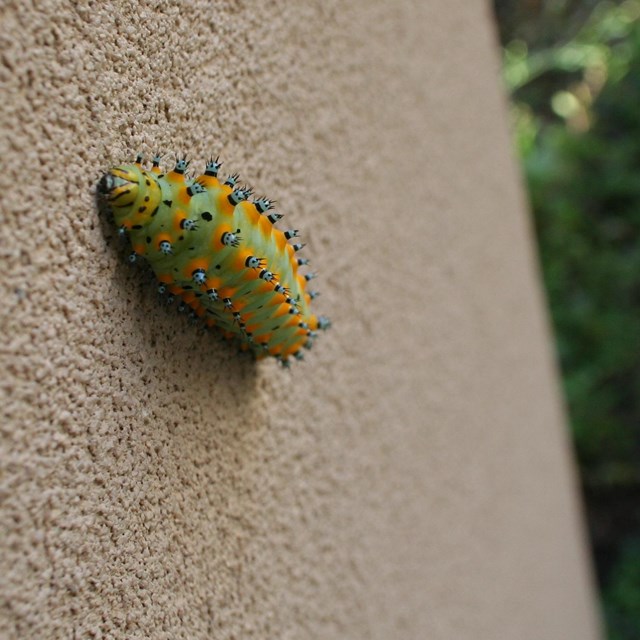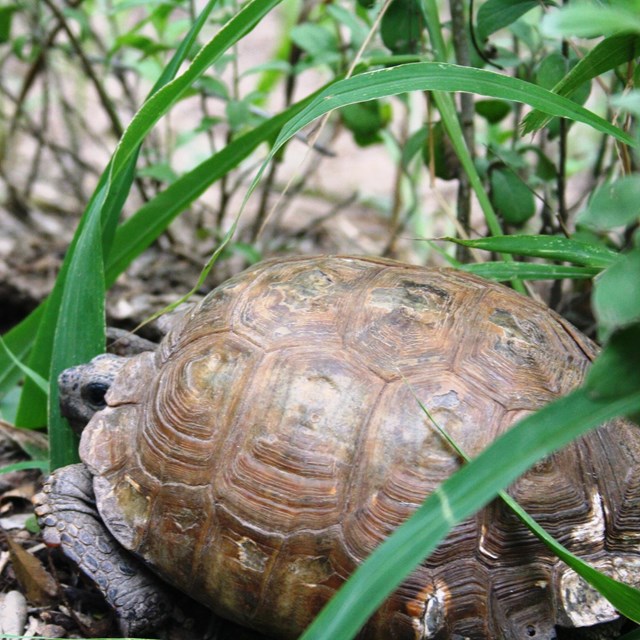
NPS (public domain) More Than a BattlefieldPalo Alto Battlefield National Historical Park was created to recognize an important historical event, but it also protects many natural resources. Park boundaries are drawn around more than 3,400 acres of undeveloped land. The park contains an abundance of plant and animal life—including many species unique to the U.S-Mexico border region. Palo Alto's Other SideTo the north, south, and west, the open prairie gives way to dense thickets of mesquite, acacia, and thorny undergrowth crowning low rises. These thickets are believed to have inspired the name Palo Alto (Tall Trees.) The park is crisscrossed by a series of shallow ravines, known as resacas.These resacas once formed the bed of the shifting Rio Grande. Although they remain dry much of the year, occasional heavy rains create small pools in them. These pools spur the growth of reedy plants that thrive in marshy areas. This assortment of habitats also supports a variety of animal life. Coyotes, jackrabbits, and bobcats roam the open plain. Javelina, opossums, tortoises and many other animals find refuge in the brush. Rattlesnakes, scorpions, and fiddler crabs can be found in burrows under the ground. Dozens of different kinds of birds, including raptors and tropical species can be spotted perched on tree branches. 
NPS (public domain) Finding BalanceThis situation creates an interesting problem for the park. As a national park, Palo Alto is committed to properly documenting, protecting, and managing its natural resources. As a battlefield site, the park must emphasize the site's historical importance. History & Nature Side by SideFortunately, cultural and natural resource activities at the park usually complement each other. Battlefield preservation projects usually support habitat preservation. This habit provides a home for plants and animals that have called Palo Alto their home since the time of the war. Similarly, projects to restore the landscape to its Mexican War era appearance generally encourage restoration of native habitat and species. |
Last updated: February 18, 2025



